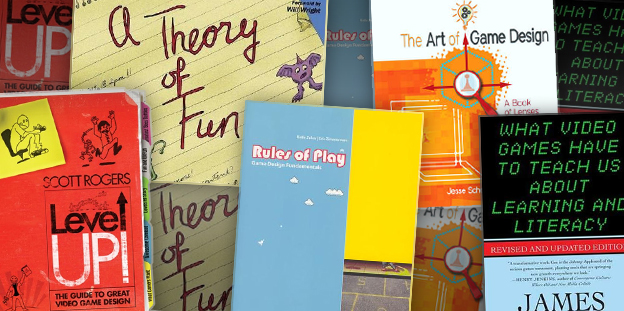Indie cindy

The distant summer of 2004, June. I am passing through Voronezh; a fresh issue of Game.EXE is not released from my hands all day, but a randomly seen rack with pirated disks, entirely made up of boxes with Half-Life 2, to which someone carefully (and obviously in haste) painted a gray cover, crashes into memory not forgetting to stick on top the good old lambda. Then I still don’t know that this is just a beta version, or that we will only meet with this game in December ... And I don’t know anything about Steam, which immediately after the release of Half-Life 2 It seems that everyone who can, and not least for the fact that not everyone has an Internet connection, will swear, and the code for the game just bought risks being stolen by someone right out of the box in the store.
Ten years will pass. Neither Game.EXE nor CDs will survive them. But Steam ... Steam will overcome the "abyss", defeat all childhood diseases and become big. First, it will step by step become a de facto platform for the distribution of "big" games, and then - also a ticket to the future for indie developers - thanks to the Greenlight service. But was Steam Greenlight an indie grave for them? After all, in just the first four months of 2014, as many games were missed on Steam as they appeared in it for the whole of 2013 (if you do not believe it, then here's a fun and scary schedule ).
Talking about Half-Life 3 is useless so far - now Valve and Gabe Newell are personally primarily interested in Steam, - and the game itself, according to the latest rumors, has just started and is at the stage of concept art. Therefore, we will talk about Steam and indie.
Soap bubble
In 2008, large development companies felt quite comfortable. The thing was that over the past years they felt for financially profitable game genres and all that was now required of them was not to turn off the chosen track, exchanging for a different "small thing" to which publishers then attributed classic RPGs, 2D platformers , puzzles and other great, but not so commercially attractive genres as Call-of-Duty . This directly relates to the question of why we all could not wait, for example, the appearance of the new Might & Magic from the right to buy the Ubisoft series, and other continuation of the wonderful games from the past. A niche product for a very narrow target audience - that’s the point.
The place did not remain empty for long - the game was joined by "young and daring" authors of games such as Braid, Minecraft and World of Goo. Although, of course, Braid with its budget of $ 180K and the vast experience of its creator Jonathan Blow deserves a separate discussion, but for today's topic this is not so important. Another thing is important - the initiatives of the developers of these games were accepted by the players with a bang, and the games themselves turned out to be wonderful and deservedly made their authors millionaires.
Soon after that, the others pulled themselves up ... their games were already not so perfect. Though not bad, but millions were gone. However, the gold rush has already begun. Thousands of developers rushed to quit their boring work in order to "go to the dream" and get incredibly rich. There were many people, as usual, no, no, not that way - there werea lot.
So we quietly came to the present day.

How to arrange a catastrophe 101
Take the player who bought a new game on Steam from a freshly baked indie developer. Imagine that it is of disgusting quality - I do not know about you, but it will be very easy for me to do this! In the best case, the buyer will launch it once - if at all. It is not so important. But! It is possible that this person will not buy a single indie game anymore. For a month, or for a year. Or never.
It turns out that the first indie developers started making their games simply because they couldn't help but make them. They loved the game. They were pioneers of new genres and reanimators of the old. They discovered new types of gameplay and encouraged big market players to revive long-forgotten franchises - again, remember Might and Magic X, for which the publisher gave a small bag of money, only seeing the success of a completely different gamemade with completely incomparable funds.
Now it has become fashionable to make a shitty game and sell it for a penny. That it wasn’t so offensive to the buyer - because it’s cheap. No, but what, in fact? .. Well, and since no one wants to buy their game with this approach, they begin to blame it on the App Store, Steam - and anyone else. But, as an inquisitive reader already guessed, it’s not at all a fact that the devastation is in the sites, not in the heads.
A bit of math for first grade. All together, gamers spend X dollars per year on games that are shared between Y developers. Let's assume that X is a constant that differs only a small margin from year to year ... but Y is definitely creeping up! And cake X has to be divided into more and more hungry mouths. Competition is only fiercer that you have to fight on equal terms with your own "idols" - Notch and his ilk. But who can withstand such a fight?
All other problems are in the developer's mind. The incredible cruelty of Steam, the inability to stand out without visiting any GDC or the next Game Jam - all this is just an attempt to get away from these simple, cruel numbers.
No, of course I do not expect that the riveters of all vile deeds at this moment will cry, perform a ritual burning of unreleased sources and sit down to read books on game design . I myself put up with the fact that without marketing it is now impossible to survive. But the more I look around me, the more I am surprised - how much are people capable of ruining their own lives? ..
 Don’t get me wrong. Among the new indie games, there are wonderful games - and many of them are forged by companies born of the commercial success of the very "original" indie games made by them. If only every day there were no new companies that try to act in the old ways - and all because they do not understand that those methods no longer work.
Don’t get me wrong. Among the new indie games, there are wonderful games - and many of them are forged by companies born of the commercial success of the very "original" indie games made by them. If only every day there were no new companies that try to act in the old ways - and all because they do not understand that those methods no longer work.After all, there is a way out. The following will work: not endless attempts to make another clone in an attempt to catch up with the trend (and infinitely lag behind it at the time of release), but an attempt to answer the question - is your approach unique? Is everything all right with the game design? Are you interested in playing your own game? Have you found the “back street”, that niche where no one has ever been before - and everyone is just waiting for you - and not just another clone? If your answer is yes, then you are on the right track. If not, don’t waste your time. Go and make a completely different game. An indie game has no right to be unoriginal simply by definition.
If these questions seem like a waste of time to someone, then I will give the advice of the already mentioned Jonathan Blow (he gave it back in 2006 at one of the conferences). Look at the old games. No, not Diablo and Fallout - on those games that everyone has forgotten about today. For those who, most likely, had original and fascinating mechanics instead of a heart inside. Your game may not be at all about that and not at all like that - but the feeling that it will arouse in the player during the game is your goal.
For inquisitive readers: I wanted to write a lot of this before, but the reason to finally uncover the pen and keyboard was that recently my thoughts were confirmed in the latest May articles by Jeff Vogel “The growing indie soap bubble” (it is not very well known to us) but his games are little known - Avadon and Avernum) and “Reflections on the Future of Indie Games” by Taiga Kelly (guilty of OUYA and a regular author on Gamasutra). For my post, I borrowed from them several interesting calculations. If you have enough time, I advise you to read these articles.
